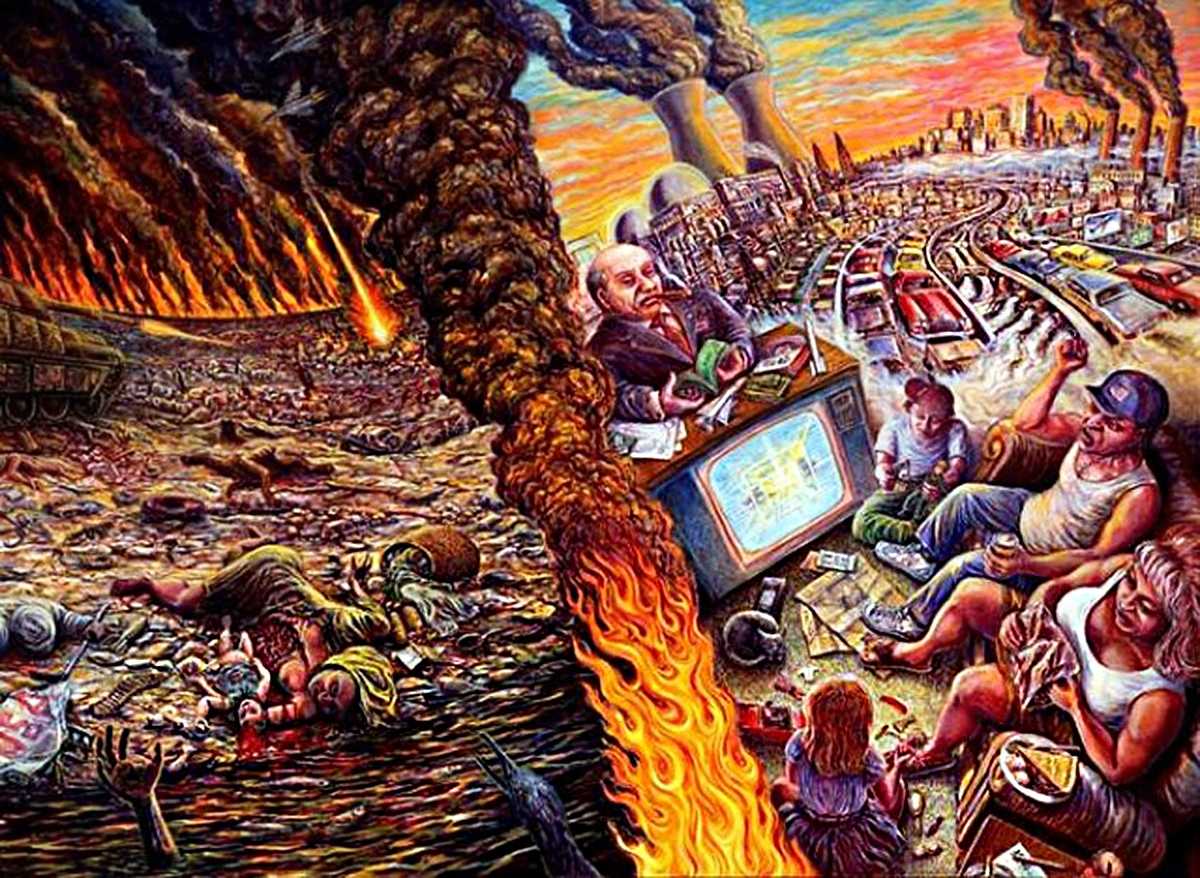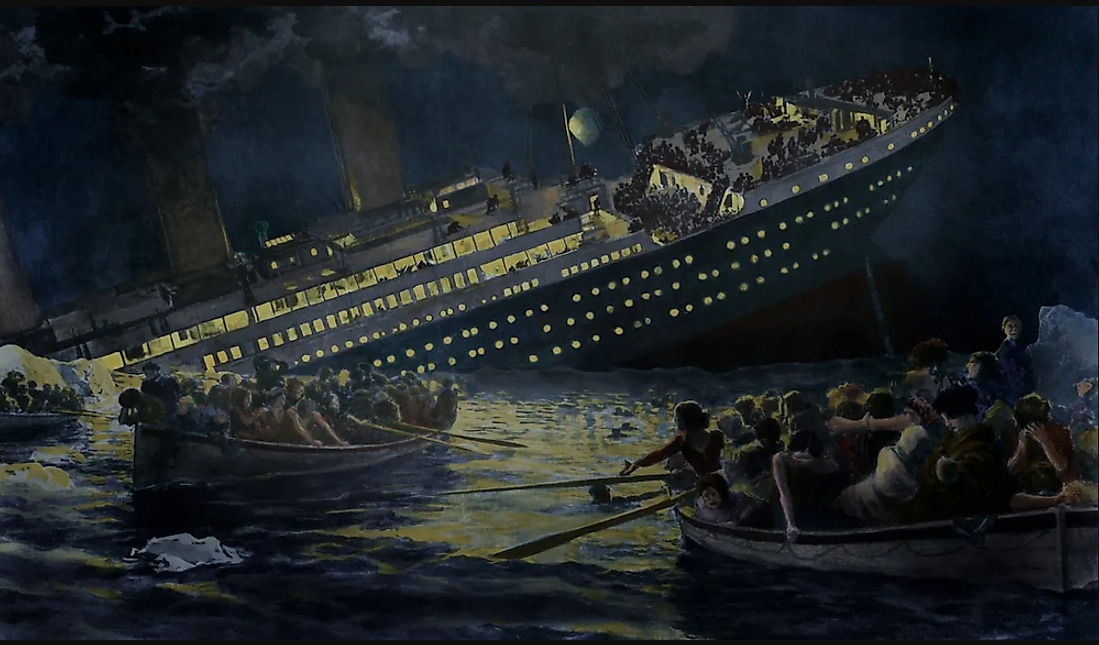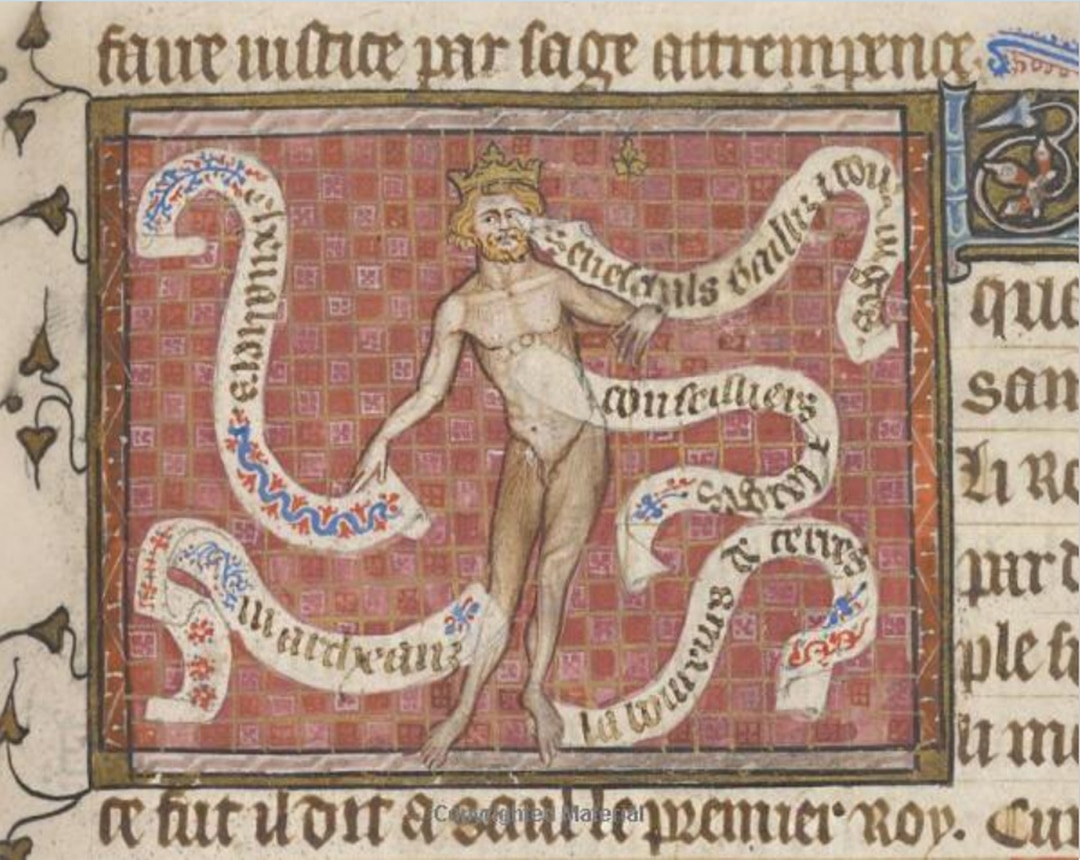

The Kali Yuga: Keeping the Faith in a Dark Age
by W.D. James | Dec 28, 2024
In the 1960s and 70s the concepts from Hinduism that gained prominence in Western cultural circles were things like Dharma, Karma, Yoga, Kundalini, and of course Tantra (emphasizing the versions that center on sexual practice). Further, there was a rush of gurus who came from India to the West. Many of the big rock bands had their favorite guru. What all of this seemed to symbolize was a sense of longing and searching on the part of many Westerners and looking to Eastern traditions for guidance they did not find in the remnants of Western traditions.
For the past decade, at least in certain internet subcultures, the Hindu concept of the moment is the Kali Yuga. Whereas the tapping into Hindu traditions of previous generations may have had a hopeful or affirmative tint to it, the fascination with the Kali Yuga is more pessimistic, or at least very sober.
Within some Hindu traditions, the Kali Yuga refers to the last and darkest age of a cosmic cycle of time. However, the current interest in the concept does not come from Hindu sources directly. There are not tons of Western internet denizens poring over the Vishnu Purana.
Below we will look at how the concept was used within Traditionalist or Perennialist circles in the twentieth century, which comprises the actual background of the current use of the term outside authentically Hindu contexts.

The relative popularity of the term at this time is significant. It shows that many people, myself among them, are not just experiencing our current problems and conundrums as a relative and temporary downturn. Our time has the feel of a more substantive ending. Already, in 1946, René Guénon, writing in The Crisis of the Modern World, observed “this end is doubtless not the ‘end of the world’ in the complete sense in which some persons seek to interpret it, but it is at least the end of a world…” (emphasis added).
By way of exploring the Traditionalist critique of modernity and modern conceptions of the metanarrative governing its conception of time, we will get the theoretical background necessary to understand their conception of the Kali Yuga. We will then unpack that conception itself. Next, we’ll look at some ways the concept is employed in current political thinking, taking a side-glance at Julius Evola’s use of the concept. This will let us properly frame an important contemporary issue within anti-modernist thinking. Finally, we’ll look broadly at what one is to do within an end(ing) time.
My stance toward Traditionalism is essentially positive, but not without qualifications. I see it as a modern articulation of a basically neo-Platonic framework and then using that framework to understand the undergirding structure of traditional religions. Further, I find its critique of modernity pretty much spot on. However, I see it also as a modern reaction against modernity and I don’t think it, as a movement, sees itself in that way. This creates problems for various Traditionalist thinkers where they tend to be overly literal. Holding to actual Hindu chronologies in approaching the Kali Yuga (see below) is one of them. Also, they tend to reject biological evolution and affirm things like the literal existence of Atlantis. I think their mistake is essentially to try to turn everything into metaphysics and some things are really myths. So, if I were to adopt the label to apply it to myself, I would modify it as critical-Traditionalism. Nevertheless, I take their diagnosis of modernity and its ills to heart and find the idea of a unifying structure underneath various religions intriguing, but would tend to take that as an analysis of what makes a religion a religion in the first place.
Traditionalism as anti-modernism

Progress is the defining characteristic of time as understood from within modernity. The very term ‘modernity’ denotes a break from all previous times and the rationale for that break was the promise of linear progress. Through science, philosophy, technology, and economic development, we were to be freer, and life was to be better in the modern era. Up, up, and away!
There were essentially two ways of conceptualizing this progress: as open-ended, continual improvement or as a more absolute consummation of inherent possibilities present within human and social existence.
Modern empirical science provided the structure for open-ended development. The experimental method combined with inferential theorizing promised no final, perfect, definitive end point, but promised unlimited incremental improvement in a definite direction. It would spin off technologies to improve the human lot. The ameliorative approach of liberal politics and the market mechanisms of capitalism provided similarly structured political and economic approaches assumed to be capable of providing ever-increasing freedom, equality, and prosperity.

The dialectical philosophies of Hegel and Marx built progress into the structure of reality as existing tensions, or ‘contradictions,’ within an historical situation would automatically generate solutions which in turn would produce their own contradictions and new solutions. Each thinker saw this process continuing until all contradictions had been overcome and society would reach the ‘end of history.’ This approach was more deductive, more scientific in a precise way, working toward the necessary philosophical, and they held, historical, outcomes of their premises.
Both approaches share a unidirectional view of human history (of course, ‘setbacks’ happen, usually because ‘reactionaries’ just can’t help being ‘on the wrong side of history’). ‘Progressives’ are the ones who understand that and who are committed to the hard work of making sure nothing holds back humanity’s progress toward the shining future.
Hence, when Traditionalism posits a cyclical view of time and insists that not only does progress (as understood by progressives) not occur, but that decadence is the norm, and that the modern world represents the end point of spiritual, cultural, and moral decline, it could not be more antithetical to modernism. As the narrative of progress becomes harder to believe, we look for alternatives.
Cyclic time

Guénon (pictured) begins his exposition of the doctrine of the Kali Yuga by linking it to the Western myth of the four ages: Gold, Silver, Bronze, and Iron (as found in Hesiod) and similar myths from around the world. They all speak of a golden age in which humanity was at its best and tell the story of decay down to our current age.
Traditionalism is built on the notion that there is a universal “primordial spirituality” which was revealed to various humans long ago and which provides the shared core of all the world’s religions. There was the initial apprehension of this truth or “principle” and then each religion exists as the vehicle by which this is passed down through tradition, with each one also characteristically informing a particular civilization. The shared truth is held to be the esoteric core common to faiths and the differences between faiths is held to be the exoteric manifestations of religions.
So, we start, spiritually, at the optimal point with the reception of this truth and then as it is passed down over time “the primordial spirituality becomes gradually more and more obscured,” according to Guénon. Hence, time is essentially a story of spiritual entropy. There are countervailing forces as well that may arrest or even reverse the story of decay temporarily. As he notes: “two contrary tendencies are to be traced in everything, the one descending and the other ascending, or, in other words, one centrifugal and the other centripetal.”
So, on this view, things start with great coherence brought about by the maximum of spiritual power to begin with and then progressively that spiritual energy is lost and disorder sets in through various stages of decay. According to Guénon, this takes the form of a civilization becoming more and more materialistically oriented and losing sight of matters of the spirit altogether. When the situation reaches its bottom point, when the cycle of time has run its course, the world is in such dire straits and the move towards purely material existence has realized all the possibilities in that direction, that through sort of a jerk rebound, spirituality is revived, the people come to live in virtue and the process starts over again. The countervailing tendencies represent epicycles within the larger cyclical pattern. On the traditional Hindu view, a full cycle takes 12,000 ‘divine years,’ or well over 4,000,000 earthly years to complete. Contrary to some Traditionalists, I tend to take this completely metaphorically or mythologically, not at all literally.
The final time before the end (of this cycle) time is the Kali Yuga when the goddess Kali is at her most destructive. The destruction itself serves a divine purpose of preparing people to receive spiritual wisdom (on most coherent views, everything ends up serving the Good, even against the will of the evil). According to a popular website, the characteristics of life in the Kali Yuga are:
“Genuine religion will disappear day by day.
People will be unclean, untruthful, merciless, short-lived, and of weak memory.
Wealth alone will be the indicator of a person’s social status.
Those with power and influence will escape justice and flout the law.
In place of marriage, men and women will live together simply due to romantic attraction.
The worth of a man or woman will be judged according to their expertise in sex.
Success in business will depend on deceit.
Those who do not have money will be considered substandard human beings.
Hypocrisy will be accepted as a virtue.
Beauty will be judged simply by one’s hairstyle.
People will think that eating well is the highest goal of life.
People will practice religion simply to achieve fame.
There will be widespread famine and excess taxes, and people will be forced to flee to forests and mountains.
The maximum duration of life will be 50 years.
By the end of Kali Yuga, human beings will be of a reduced size, the Vedas will be completely forgotten, and the leaders of society will be thieves.
People will have no other professions than simply cheating, killing, and stealing from one another.”
Well, I’d say we are at least close to there.

Guénon observes that “modern civilization has sunk stage by stage until It has reached the level of the lowest elements in man and aims at little more than satisfying the needs inherent in the material side of his nature, an aim that is in any case quite illusory since it constantly creates more artificial needs than it can satisfy.”
I find the overall description and diagnosis of our modern condition quite satisfying. I also accept that little short of a spiritual rebirth will do much for us. It is helpful to view things from the Traditionalist perspective to get a sharp, high altitude, look at ourselves and our time, so as not to get too caught up in the details that don’t fundamentally matter. Ours is a civilization with very little spiritual energy left; little cohesion. As Leonard Cohen sang:
Things are going to slide, slide in all directions
Won’t be nothing
Nothing you can measure anymore
The blizzard, the blizzard of the world
Has crossed the threshold and it has overturned the order of the soul
Riding the tiger, surfing the wave, or keeping the faith?
If we are in such a dire situation and if the immediate prospects of a complete spiritual renaissance seem negligible, how are we then to live?

Much of the online alt right and ‘dark enlightenment’ types follow the very unorthodox Traditionalist Julius Evola and advocate that we are left with ‘riding the tiger’ (which he discusses in the book of that name and in Revolt Against the Modern World). This would essentially mean adopting the very dangerous path of becoming part of a spiritual aristocracy which would hold to Traditionalist values and to living dangerously in inhospitable times according to those values. Evola is fairly cryptic about what exactly that would mean, but seems to be alluding to a form of ‘accelerationism’ which is the position of hastening the full wreckage of Western civilization so that we get to the end, and hence the new beginning, more quickly. That is, not attempting to shore up what remains or work for any sort of counter tendency. Capitalism, technological development, and libidinal energy should be maximized to the point of societal destabilization. On Evola’s account, this also involves a moving beyond traditional morality. Evola’s non-orthodox Traditionalism essentially reflects his adoption of some Nietzschean elements and reflects Evola’s own “super-fascism” (his terminology, probably meaning ‘transcending fascism’). Originally a strategy theorized on the extreme left, it is now mostly advocated by those on the far right. The more things go around….
A more relaxed spin by the alt right was first formulated by an anonymous poster on 4chan and that is to surf the wave of the Kali Yuga: just hang loose and have as much fun as possible while the world goes to hell. There is an entertaining brand of clothing produced under the label “Kali Yuga Surf Club.” I suppose I do appreciate the humor somewhat.
However, this is not the counsel of more traditional Traditionalists who have, I think, a more solid metaphysical basis they are working from. Guénon himself advises: “Those who might be tempted to give way to despair should realize that nothing accomplished in this order can ever be lost, that confusion, error, and darkness can win the day only in appearance and in a purely ephemeral way, that all partial and transitory disequilibriums must perforce contribute toward the greater equilibrium of the whole, and that nothing can ultimately prevail against the power of truth; their motto should be the one formerly used by certain initiatic organizations in the West: Vincit omnia Veritas.” The organization referred to is probably the Hermetic Order of the Golden Dawn, an occult order Guénon had been associated with: even the traditional Traditionalists have their oddities.

In Charles Upton’s Legends of the End, a comparative study of the ‘end times’ from eight religions, he insists that the struggle is not a political one, but one of the soul. He advises caution in being too apocalyptic about the apocalypse. As a student of Plato, I think that which concerns the soul is political and vice versa. I also think the apocalypse is relatively apocalyptic.
In The Eleventh Hour: The Spiritual Crisis of the Modern World in the Light of Tradition and Prophecy, Martin Lings focuses on the ‘divine intervention’ that will empower the turning from the Kali Yuga to renewed spirituality and speculates this could arise through North American Indians or Muslims.
All of the traditional Traditionalists understand that to foster what is evil so that good may come (the accelerationist gambit) is… evil. The end does not justify the means (contra Nietzsche). Good is good, Truth is true, etc…
Hence, I would like to propose ‘keeping the faith’ as the catchphrase for how to live in the Kali Yuga. Literally, it just means stay true to Truth, value the Good, adore the Beautiful. That is always the counsel of genuine Wisdom when living in bad times. Further, the phrase itself derives from the American Civil Rights movement and I like that association: keep the faith brother (or sister). That has a good ring to it.
Talking about a revolution
Literally, when a circle has been closed, a revolution has occurred (there has been one complete revolution around the center of the circle as a calendar year represents one revolution of the earth around the sun). Revolution also denotes an abrupt change. Hence, the completion of one cycle and the beginning of a new would be revolutionary in this double sense. I think that tells us something about the metaphysics of revolution.
I hope for a revolution. That might be of the full cosmic cycle initiating a new age or possibly just the spinning of a little epicycle that will move things in the right direction for a while. Really, whatever the cosmos has in mind is fine with me. Regardless, I take that my (and all of our) task essentially remains the same regardless of the vicissitudes of time.

This revolution, this turning, when it comes, will come from above and from below. The “primordial spirituality” is rooted in metaphysical truths that transcend any person or group of people. That spirituality goes beyond this, but I think some of the basic metaphysical realities contained in the primordial spirituality are that the Good is good, the True is true, and the Beautiful is beautiful. From below, it will be some particular human or group of humans who get in touch with that spirituality. Maybe they will be Navaho or Shia or Taoists or Hindus or Christians. Probably all of them, all at once: turnings, revolutions, are like that.
What might the ‘from below part’ look like more concretely? Specifically, is it a new elite we are looking for or possibly looking to join? In The Populist Delusion, Neema Parvini provides a contemporary statement of the old idea that effective political movements are always matters of elites, even if they operate in the name of ‘democracy’ or ‘socialism’. This has to do with the basic dynamics of building and organizing effective political organizations. I think most of the traditional Traditionalists also assumed a new spiritual elite would be at the center of the revolution. Further, I think this is a core belief of what I have termed the ‘aristocratic anti-modern’ perspective.
In the Tradition of the part of the Perennial philosophy I come from, our messiah is a carpenter who had no place to lay his head and his greatest Apostle reminded his followers that “For you see your calling, brethren, that not many wise according to the flesh, not many mighty, not many noble, are called.” I suspect that the from-the-bottom part will come from the bottom of the bottom. Who has the spiritual thirst? Who retains some remnant of virtue? Who still has some common sense? I’m not seeing much of that with any of the folks you could call ‘elite’ in any real sense. If it comes any time soon, I think it will come through the regular folks, the populus. Most of the mystics and most of the spiritual rabble rousers through history have been from the humble, lowly segments of the world.






